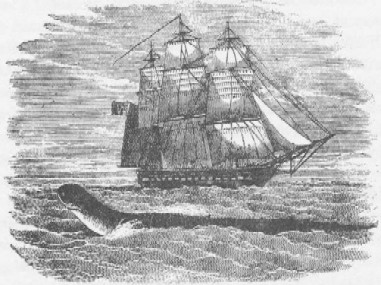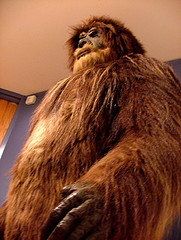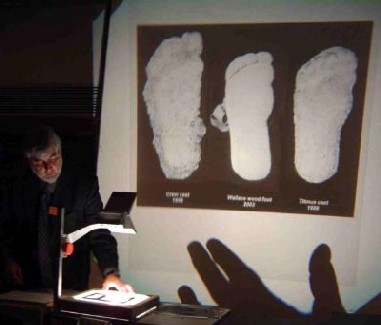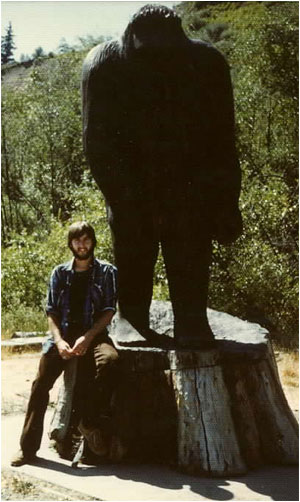Loren Coleman’s Top Cryptids
Posted by: Loren Coleman on October 27th, 2006
Halloween 2006 seems as good a time as any to publish a response to several requests I have received lately for my top ten picks in cryptids, those animals that serve as the focus of cryptozoologists.

Of course, thinking outside the lines, as I always do, I had to choose thirteen. Also, I had to create two parallel lists. One is for those supported by what I see as the most credible evidence, in my opinion only. For the other group, I see this one as viewed through the public’s eye, those most popular cryptids, monsters, crypto-creatures, or whatever the latest moniker might be that comes into a reality television producer’s creative copy, or an article author’s narrative.

Here’s how I see it. Share your thoughts on your lists, below, in comments, if you wish.
Happy Halloween!

Loren Coleman’s Top Thirteen Most Credible Cryptids
(those with the best evidence)
1. Bigfoot/Sasquatch (Pacific Northwest specific)
2. Orang Pendek
3. Giant Octopus
4. Cryptid Cetacean (Mesoplodon sp.)
5. Thylacine
6. Yeti
7. Nguoi Rung
8. Yeren
9. Queensland Tiger
10. Sea Serpent
11. Ogopogo
12. Spotted Lion
13. Loch Ness Monster/Nessie

Loren Coleman’s Top Thirteen Most Popular Cryptids
(as known by and to the general public and mass media)
1. Bigfoot
2. Nessie
3. Yeti/Abominable Snowmen
4. Sea Serpent
5. Mothman
6. Chupacabras
7. Dover Demon
8. Mokele-mbembe
9. Thunderbird
10. Skunk Ape
11. Yowie
12. Nandi Bear
13. Jersey Devil
Sometimes, it seems the more bizarre the cryptid, the more popular it becomes, especially in this modern Internet age. The Chupacabras (pictured below) resulted in high online interest beginning in 1995. But it has happened before, via newspapers and televisions broadcasts, for example, thirty years ago due to something being seen in Dover, Massachusetts. After all, all news is local, first.


Bill Bartlett’s painting of the Dover Demon, April 1977.
About Loren Coleman
Loren Coleman is one of the world’s leading cryptozoologists, some say “the” leading living cryptozoologist. Certainly, he is acknowledged as the current living American researcher and writer who has most popularized cryptozoology in the late 20th and early 21st centuries.
Starting his fieldwork and investigations in 1960, after traveling and trekking extensively in pursuit of cryptozoological mysteries, Coleman began writing to share his experiences in 1969. An honorary member of Ivan T. Sanderson’s Society for the Investigation of the Unexplained in the 1970s, Coleman has been bestowed with similar honorary memberships of the North Idaho College Cryptozoology Club in 1983, and in subsequent years, that of the British Columbia Scientific Cryptozoology Club, CryptoSafari International, and other international organizations. He was also a Life Member and Benefactor of the International Society of Cryptozoology (now-defunct).
Loren Coleman’s daily blog, as a member of the Cryptomundo Team, served as an ongoing avenue of communication for the ever-growing body of cryptozoo news from 2005 through 2013. He returned as an infrequent contributor beginning Halloween week of 2015.
Coleman is the founder in 2003, and current director of the International Cryptozoology Museum in Portland, Maine.










Loren,
Also, I think more people would have heard of Champ than some of the other popular crytids you mention in the second list, like the Dover Demon, for instance.
What about Cadborosaurus? From the number of extremely similar sightings in the Vancouver area, this seems a likely creature (in the sea serpent category, of course). Perhaps there is just not enough physical evidence yet?
Folks, list your own choices.
I got tired of viewing only North American choices as the ones that are most popular (such as Caddy or Champ).
More Africans are interested in Mokele-mbembe and more Aussies think about Yowie than you might guess. But never mind, such thinking is only my rationale. And the Japanese love the Dover Demon!
Hey, write your own lists and share ’em.
Thanks for your lists Loren. Very interesting.
My number 1 cryptid has always been the Monongahela Sea Monster. Being from New Bedford, MA, that story has always been so fascinating. Here’s the story in case some of you aren’t familiar:
In 1852, the whaling ship Monongahela was somewhere around latitude 3° 10’S and longitude 131° 50’W when it came across some type of 100ft sea “serpent.” They launched the longboats and harpooned and killed the monster in the same fashion as a whale. It was too large to keep, so they hacked off the head and stored it in pickle brine. Unfortunately, the ship was lost on its voyage back, but its sister-ship (the Rebecca Sims)returned with the Monongahela captain’s log, which contained the story in great detail.
It’s a great story and I’ve always wondered what it was that they encountered out there.
Being from upstate New York I wish you would have included Champ. The Mansi photograph has got to be considered as compelling a piece of evidence for proof of lake monsters as the Patterson film is to of Bigfoot.
1. Sasquatch
2. Yeti
3. Yowie
4. Washington’s Eagle/Thunderbird
5. Champ
6. Giant Anaconda
7. Orang Pendek
8. Cadborosaurus
9. Ropen
10. Megalania
11. Mokele-mbembe
12. Nguoi Rung
13. Orang Dalam
Guys,
For me it has to be:
1 – Thylacine
2 – Cadborosaurus
3 – Sea Serpents
4 – Yeti / Abominable snowmen
5 – Loch Ness Monster
Not sure about Bigfoot and the other noted crytids as I really dont know enough and need to study them in depth.
Very interested in the Thylacine continuing to be around especially after viewing the Doyle footage and eagerly awaiting proof!!
In the case of Nessie, would largely discount if not for a number of sightings including land based that seem clear and beyond dispute.
As an englishman the appeal of Bigfoot is probably more remote for me than a lot of you guys for whom it may form part of your culture. Not a fan of the P G film and would really like to see some compelling evidence.
Best wishes to all
Re: “Cryptid cetacean” needs explaining. The one attested to without doubt is the distinctively marked Mesoplodon Species A., which has been identified by one prominent mammologist as the adult of M. peruvianus, but I part ways with both the mammologist and Richard Ellis on this one and think the identification is very weak and likely incorrect. Which cetacean did Loren have in mind?
The only surprise to me was Ngoi rung. I thought the evidence for that was stirctly anecdotal, often unsourced or secondhand.
Matt Bille
That picture of the Dover demon has always creeped me out.
The explanation of the Dover Demon as a sort of amphibious ape (Merbeing), seems somewhat similar to the Japanese traditions of the Kappa. No wonder they like it so much, they might just have their own!
Top Ten Most Credible Cryptids
1. Sasquatch (including PNW, Rockies, S. Central)
2. Ivory-billed Woodpecker
3. Thylacine
4. San Juan/Plains Grizzly
5. New Zealand Moose
6. Oran Pendek
7. Yeti
8. Mokele-mbembe
9. Thunderbird
10. American Black “Panther”
Orang Pendek
Ropen
Duah.
Mapinguary
Nandi Bear
Moeritherium(Congolese Water Elephant)
Yana Puma
Speckled Tiger.
Isnachi.
Dodu
Tigelboat
Mongolion Death Worm
Three Types of Big Foot.
My 13 choices:
1. Sea Serpent (though not likely to be a real serpent, maybe the same as cryptid cetaceans)
2. Thylacine
3. Pygmy Elephant
4. Spotted Lion
5. Onza (though it’ll take a few thousand years to speciate away completely from pumas)
6. Champ (NOT the same as #1.)
7. Tatzelwurm (if not extinct)
8. Sasquatch
9. Waitoreke (betcha its a marsupial)
10. Mongolian Death Worm (which will not be nearly as impressive as its name when its found)
11. Dwarf Moa or Giant Kiwi
12. Yeti
13. DeLoy’s Ape (actaully an unknown giant tailess spider monkey)
At least we know jackalopes are real.
Next to Sasquatch, my favorite cryptid is Napolean Dynamite’s Liger, “Half lion half tiger, it’s pretty much my favorite animal.”
Not cryptids: Ivory-billed Woodpecker & liger. These two are known species, validly accepted as existing. Indeed, the liger has never been a cryptid, except perhaps in fiction.
I thought I read that the NZ Moose, an introduced species, had been verified.
The Monongahela Sea Monster story sounds so exciting. Perhaps a wayward plesiosaur was killed only 150 years…
All great lists to be sure. A few others you might want to add: Bessie (Lake Erie), Chessie (Chesapeake Bay), Surrey Puma (England) & White River Monster (Arkansas). Thanks Loren.
1. Pterosaur (ropen)
2. BF
3. Thylacine
4. River Lizard
5. Nessie
6. Hammerhead Salamander
7. Ivory BWP
8. Bobcat Hybrid (not sure it if counts)
9. Mokele-mbembe
Wow, pretty much a toss up!
Wayne
Bigfoot in all versions and EBEs share the #1 spot for me. Nessie as #2. Sure, I want this stuff to be true. But it seems more than that. There are simply way too many reports over time on these subjects. So there has to be something too them.
The more I think about things, the more I realize how little I/we really know. Many skeptics seem to think they have a handle on everything. When in fact there is so much we simply do not understand. Many people choose to blunder through life without giving much thought to the unknown. As long as there are car commercials and soap operas on TV to watch, they seem content.
I feel this is almost a natural thing. A way of nature. After all, ignorance is bliss! Perhaps we were never intended to know it all? So for me subjects such as Bigfoot and UFOs might sound a bit crazy. But are they really? I would ask any skeptic to explain the universe to me and why we are here? Then they may come to realize that the “possibilities” of Bigfoot and EBEs, might not be such silly notions after all!
Since I have half a brain I like to use it from time to time. If I do not know the answer, I like to speculate. Then perhaps come to some sort of conclusion. It is really quite simple. For instance Bigfoot is either real or not. Same for UFOs. Based on what I know, see and hear, I speculate more likely than not, that Bigfoot and UFOs are real. I give it more than a 50/50% chance. The odds are in my favor of being right. And that is a reason why I place Bigfoot and EBEs/UFOs equally in the number one slot.
Our human existence can seem simple. But I wonder? Perhaps if we really knew more on what is really going on, we would be in shock? So here is some speculating.
If one thinks about it our earth is sort of like a small fish tank. A fish tank is the whole world to the fish and all they know. Well perhaps the earth is our tank? Perhaps EBEs are real and travel time or the universe and visit several tanks with life? Perhaps they choose to move life-forms from one tank to another? Could Bigfoot be from another world? Or how about many of the other cryptids? Might this explain the many odd sightings? Far-fetched, huh?
As I have heard on TV, the former head of CIA and President, President Bush Sr. could more than likely shed some light on the unknown. I think there is much to learn and requires an open mind.
My top is Bigfoot/Sasquatch. And after that mokele-mbembe. Then the Thunderbird. After that I remember something about a giant sloth in South America but I don’t remember it’s name.
My 7 yr old daughter likes the Jersey Devil best.
Likely to be found alive in the next 15 years:
1. Thylacine
2. Onza
3. Mokele-mbembe
4. Bigfoot/Sasquatch
5. Queensland Tiger
6. Nandi Bear
7. Loch Ness Monster
8. Moa (of some size)
9. Spotted Lion
10.Thunderbird
Loren, I was interested to read that you felt there was more of a believability factor for Ogopogo than Champ or Nessie. I think Champ laps the field in regards to photographic evidence and eyewitness accounts. Why did you discount Champ?
I don’t know if It would be considered a cryptid, but the prospect that there might be living trilobites in the deeper, darker parts of the ocean has always intrigued me.
There are also cryptids from history that time has passed on by: The Griffin, Dragons of all sorts, Biblical beasties and entities, Fairies, Sprites, Brownies, the list is endless. But I wonder what folks be listing 100 years from now?
Rollingstone,
Thanks for mentioning the trilobites!
Wayne
Here are some of my faves in no particular order:
sasquatch
skunk apes
cadborosaurus
tazelwurm
mongolion deathworm
trunko
altamaha-ha
thunderbirds
trolls
american hyena
I’m glad someone mentioned the Monongahela sea serpent, because I’ve been attached to that story (and many others) since I first read it in “Strange Secrets of the Loch Ness Monster” by Warren Smith, which (flashy title or not) is a very good introduction to sea serpents and lake monsters.
As a hybrid, the liger is not a distinct species per se.
As for critiquing inclusion of the IBW, while the species may not have been officially declared extinct, it is safe to say that it was, nevertheless, widely considered by professionals to be long gone. If the objection was based on it being a catalogued species, then it seems that one would have to exclude the inclusion of the thylacine in such lists.
Last I heard, existence of the New Zealand population of moose was supported by DNA analysis of hair, but I believe that falls short of the threshold of definitive proof.
I’ve always had a particular interest in the Mongolian Death Worm. I tens to be a tad on the skeptical side as far as its actual existence is concerned, but it sure would be a fascinating creature if it were real.
1. Bigfoot/Yowie
2. Plesiosaur
2. Thylacine
4. Mokele-Mbembe
5. Megalania
6. Steller’s Sea Cow
7. Moa
8. Thunderbird
9. Mothman
10. Imperial Woodpecker
I’d have to say…
1. Mothman
2. Dover Demon
3. Chupacabra
4. Beast of Gévaudan
5. Thylacine (Just started learning about it)
6. Nessie
7. The plethora of hairy bipeds (Bigfoot/Yeti/etc.)
There’s my top seven. I find it difficult to research Nessie/Bigfoot; almost every picture I’ve seen is obviously a hoax (almost all of the books in my school library are pre-1980, so they aren’t very useful.)
I’m going to assume that the Giant Squid was left off any of these lists because it is a recognized species? Still, I wonder to what length natural science believes that architeuthis can grow and because of the extraordinary lengths that are sometimes reported either directly or indirectly (huge squid suction circles on dead whales) whether or not it could still qualify for “the list.” I’m sure if a 200 foot specimen washes up on shore it certainly would make crypto news channels!
Part of the problem in all the lists is the definition of the individual forms listed. I use the species definition as far as can be told, and as such, cryptid lions in Africa, Asia and North America would be the same species and only one listing (for example) MOST Sea serpent sightings that are actually determinative in the first place are one species and the same species as the most clearly-defined type of freshwater “serpents”. The “Serpent” name is a description of the appearance of the wake and not the animal’s back.
As to the other cryptids I would put on the list, MOST “Abominables” appear to me to be only one species, and I do not subdivide the reports by continent. Hence Asiatic Bigfoot is the same as American Bigfoot and so on. I would not list dozens of individual names for these.
In water monster categories, unknown fishes outnumber unknown mammals by a wide margin, yet they are poorly-publicized. Loren Coleman mentioned diverse giant catfishes in an article in FATE magazine, and unknown catfishes are reported on most of the continents. Yet few people have heard of them.
Few people recognize reports of cryptid freshwater rays when they see them.
Cryptid giant Salamanders have a wide distribution in the northern hemisphere, yet only a few (such as in California) ever get any attention.
I would not focus on the top ten or whatever number. ALL of them are worthy of investigation. We need to look beyond the media hype in ALL cases.
I tend to think working at extremes in hypotheses in cryptozoology is full of sandtraps, pitfalls, and quicksand. I no more think there are 1000 different species of Lake Monsters and Sea Serpents out there than I think there is “one” species of Sea Serpent. This is the theme of The Field Guide to Lake Monsters, Sea Serpents, and Other Mystery Denizens of the Deep, which is an effort to boil down the material into some groupings.
Likewise, despite the universe of global names for “Abominable Snowmen,” “Bigfoot,” and “Wild People,” I can not subscribe to “most Abominables” being “only one species.” Nor do I subdivide them by continent, but do see a difference between some types of hairy hominoids (both hominids and anthropoids) that may live in different areas, as per The Field Guide to Bigfoot and Other Mystery Primates.
Collecting and recognizing the differences in focus as reflected in “top ten” lists not only serves to show the most credible to pursue, but also the most popular in the minds of the general public. It says nothing about what cryptids may be “worthy” of searching for, funding, or studying more. That is obviously up to each individual cryptozoologist.
There is a reason I ask for your choices, and I even appreciate the opinion of those who see no worth in this exercise at all. 🙂
The reason I didn’t mention my own list here is that it all seemed like just so much “my cryptid is WAY cooler than yours” sort of talk, but after Loren’s last post, I feel the need to mention something. I agree with the validity of many of the creatures on everybody’s lists, save for maybe dropping Mothman in favour of the Jersey Devil (Such is the nature of personal preference, and the continued sightings of the latter over the former), but if I had to pick one cryptid that I think deserves our full attention, I would have to go with the Thylacine.
Here’s my reasoning- We know it existed, not even the skeptics can dispute that, nor the fact that it once lived on the Australian mainland (Although I grant that the survivors today are likely transplants from Tasmania). It is not easy to mistake another creature for one, and there have been dozens of credible photos, and many more times that of credible sightings. If, through a coordinated effort, the CZ community could uncover definitive evidence for its continued existence, then the whole can of Mongolian Death Worms is opened to the public, so to speak. Once we have the Thylacine under our belt, it will be that much easier to legitimize our field and acquire funding to go after the harder targets, like the lake monsters and the hairy bipeds.
Anyway, just my 2 cents there, free of charge…
What. no cryptid cats? Not even in li’l ol’ England?
Cryptid cats…check out this list of fifty cryptids.
1. Mokele-mbembe
2. Wendigo
3. Sasquatch
4. Loch Ness Monster
5. Yeti
6. Chupacabra